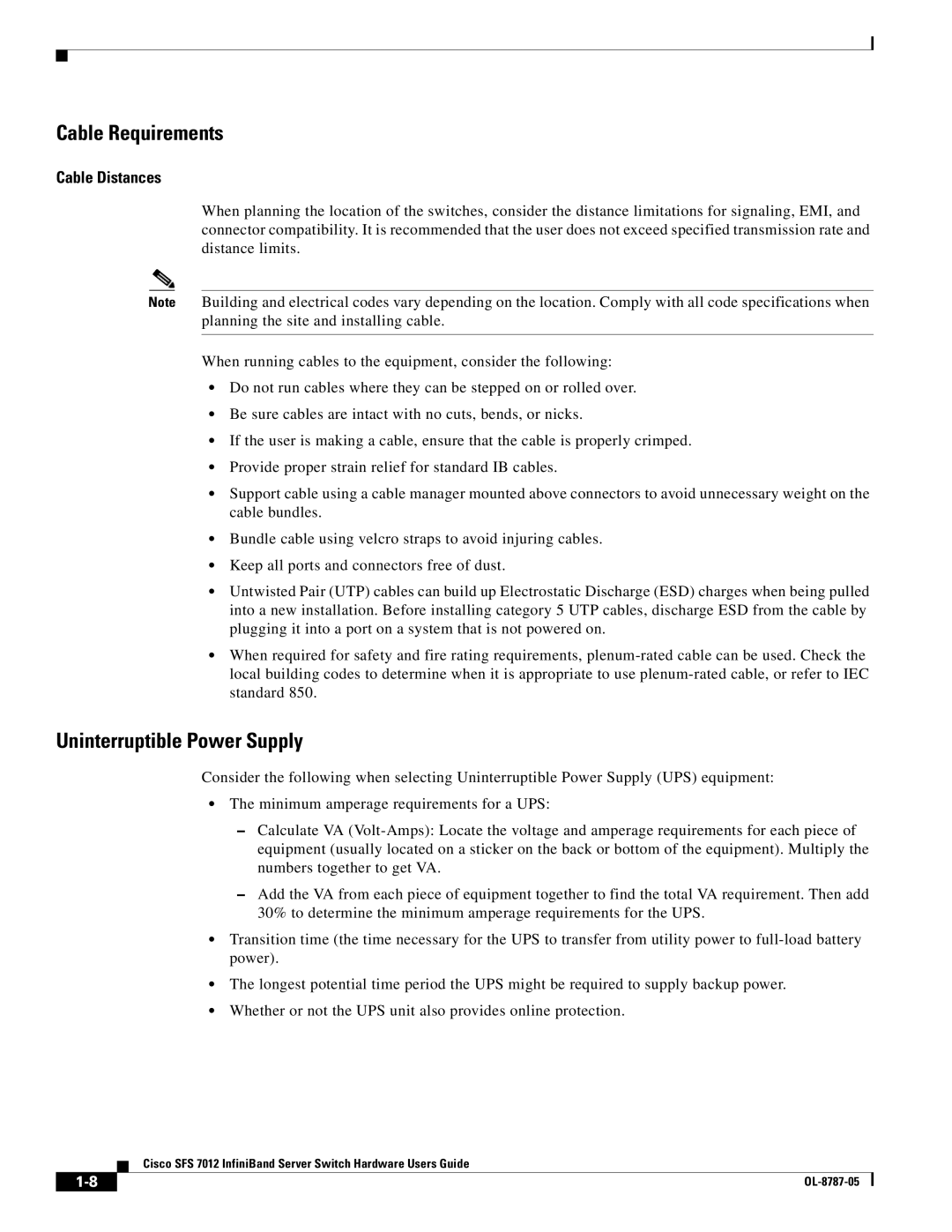
Cable Requirements
Cable Distances
When planning the location of the switches, consider the distance limitations for signaling, EMI, and connector compatibility. It is recommended that the user does not exceed specified transmission rate and distance limits.
Note Building and electrical codes vary depending on the location. Comply with all code specifications when planning the site and installing cable.
When running cables to the equipment, consider the following:
•Do not run cables where they can be stepped on or rolled over.
•Be sure cables are intact with no cuts, bends, or nicks.
•If the user is making a cable, ensure that the cable is properly crimped.
•Provide proper strain relief for standard IB cables.
•Support cable using a cable manager mounted above connectors to avoid unnecessary weight on the cable bundles.
•Bundle cable using velcro straps to avoid injuring cables.
•Keep all ports and connectors free of dust.
•Untwisted Pair (UTP) cables can build up Electrostatic Discharge (ESD) charges when being pulled into a new installation. Before installing category 5 UTP cables, discharge ESD from the cable by plugging it into a port on a system that is not powered on.
•When required for safety and fire rating requirements,
Uninterruptible Power Supply
Consider the following when selecting Uninterruptible Power Supply (UPS) equipment:
•The minimum amperage requirements for a UPS:
–Calculate VA
–Add the VA from each piece of equipment together to find the total VA requirement. Then add 30% to determine the minimum amperage requirements for the UPS.
•Transition time (the time necessary for the UPS to transfer from utility power to
•The longest potential time period the UPS might be required to supply backup power.
•Whether or not the UPS unit also provides online protection.
Cisco SFS 7012 InfiniBand Server Switch Hardware Users Guide
| ||
|
